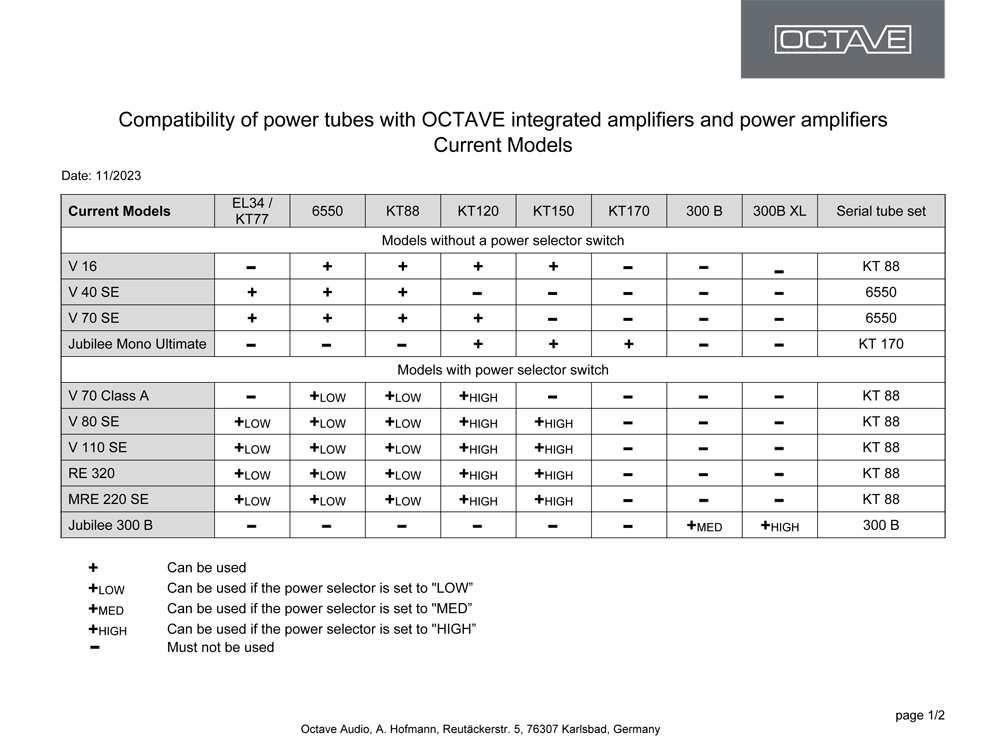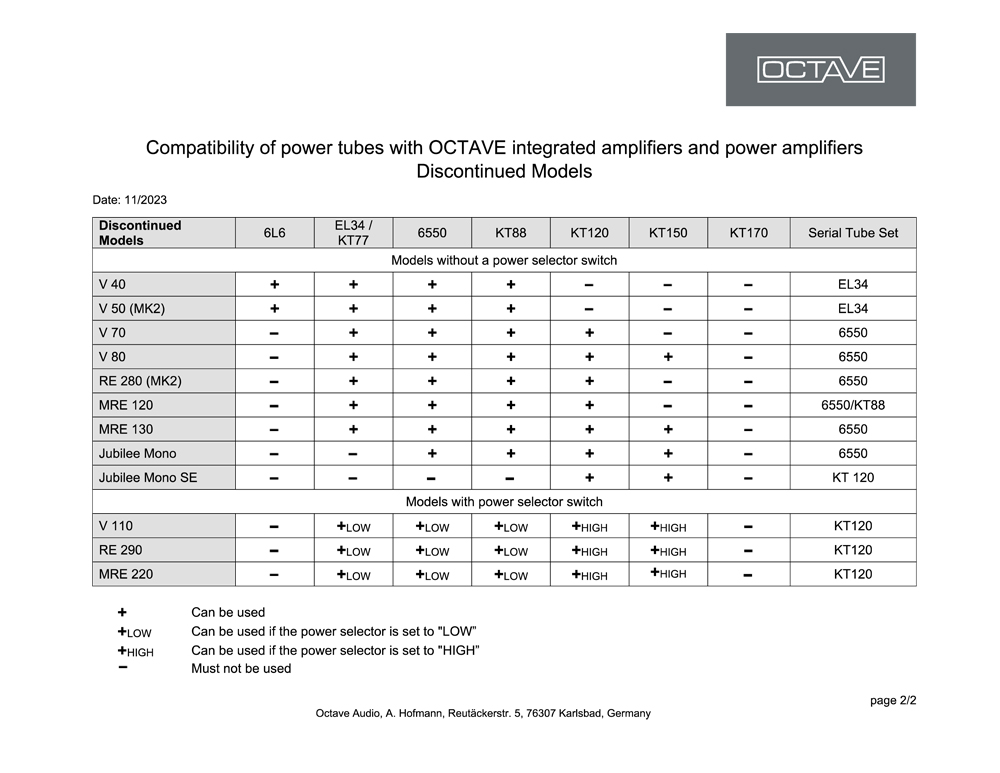WHICH POWER TUBES DO WE USE SERIALLY?
We deliver our amplifiers with output tubes that we have put through their paces:
The tube types we selected were tested for durability in painstaking long-term tests. Due to the selection, the protective circuits used and the soft-start electronics, the power tubes we insert have a service life of up to five years or more.
The tubes used are precision selected by us. This means that we measure all tubes and put the tubes with the same values together into sets. The values determined are recorded in the test report for each amplifier, as well as the selection codes attached to the socket of the tubes. This means that in the event of a tube failure, a single tube can be replaced without any loss of sound quality. The replacement tube then has exactly the same value as the other tubes.





